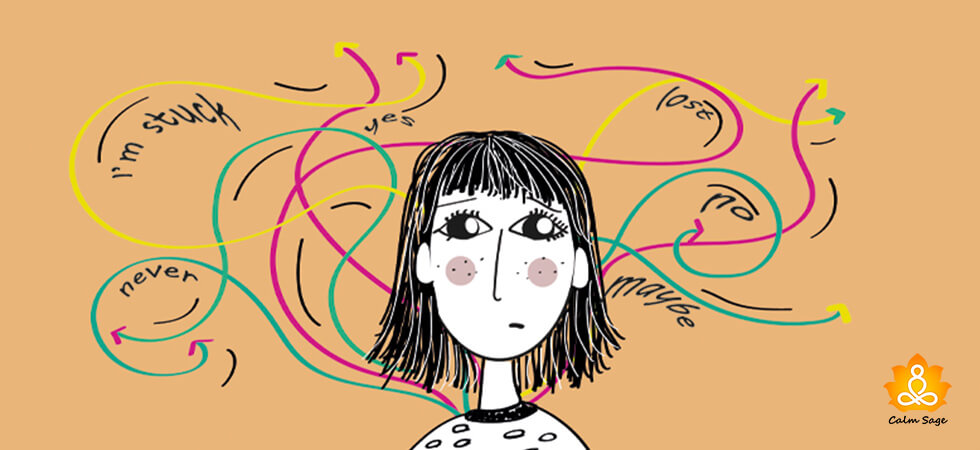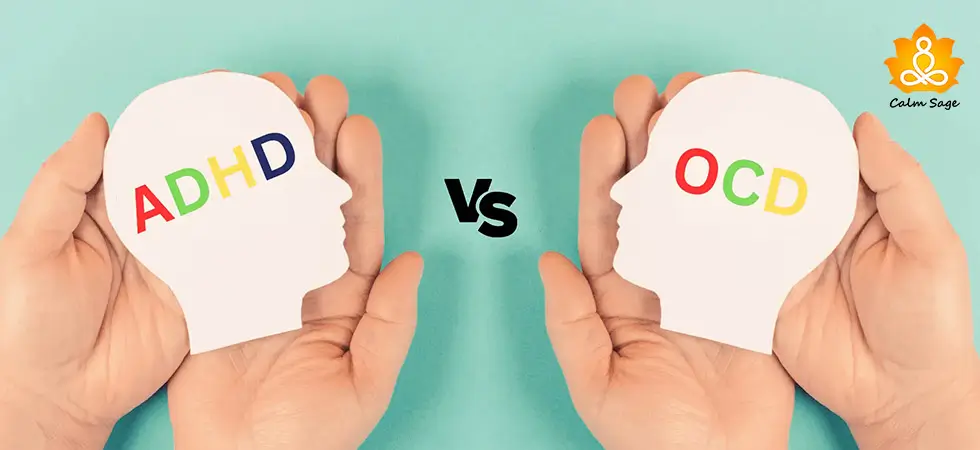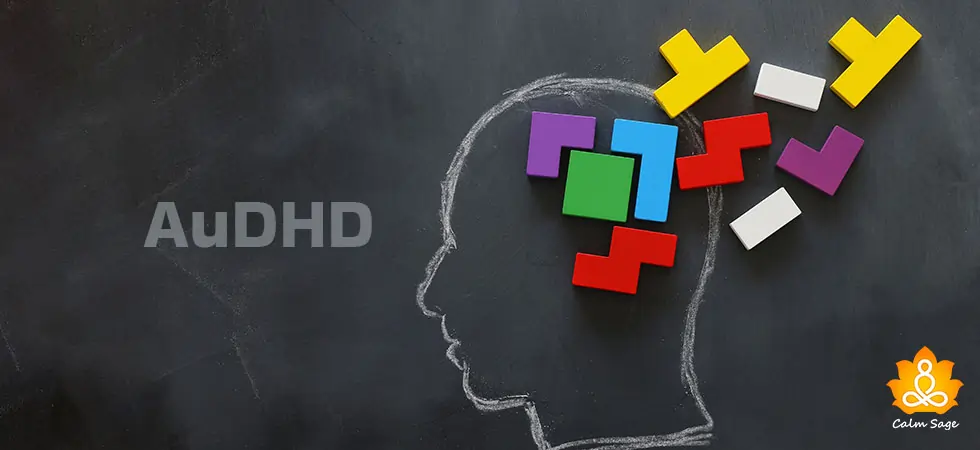Three Main Types Of ADHD (Attention-Deficit Hyperactivity Disorder)

Attention-deficit hyperactivity disorder (ADHD) can be the only mental health disorder whose diagnosis and treatment varies per severity, type, causes, and other characteristics. As far as I have researched and studied, ADHD is different for everyone and it hits differently!
ADHD is a mental health disorder that can impact emotions, the ability to learn or adapt to new things, or the behaviors of an individual differently. It can affect anyone… babies, toddlers, and adults (including men and women).
According to the American Psychiatric Association, there are three main types of ADHD; each one is based on different symptoms, causes, and treatment methods. In this blog, we will be taking a deep look at the three types of Attention-deficit hyperactivity disorder (ADHD).
So, let’s get started.
What is ADHD?
Attention-deficit hyperactivity disorder (ADHD) is a behavioral disorder that is first diagnosed during childhood. It can be characterized by impulsivity, hyperactivity, and inattention. These symptoms can occur together or can occur one-by-one.
In the next section, let us understand the three types of ADHD.
Three Types of ADHD
Since the symptoms and effects of ADHD can vary, it is important to understand the type so that you can look forward to a better treatment plan. In order to be diagnosed with ADHD, you must notify your symptoms and their impact on your day-to-day life. Let us read about the three types of ADHD along with their symptoms, diagnosis, and treatment plans.
According to psychology, there are three main types of ADHD:
- Inattentive type
- Hyperactive-impulsive types
- Combined
According to the research, each type of ADHD is characterized by different symptoms and behaviors. The behaviors can be present in an individual in the following ways:
- Hyperactivity: Hyperactive ADHD is characterized by not slowing down, fidgeting, talking, or difficulty staying on a task
- Inattention: Inattentive ADHD is characterized by getting distracted easily, poor organizational skills, or lack of proper concentration
- Impulsivity: Impulsive ADHD is characterized by taking risks and interrupting behavior
Since ADHD is different for everyone, it can be common for two people to experience the same symptoms at the same time but in different ways. For instance, such behaviors can be noticeable in boys and girls in different ways.
Apparently, boys are seen as more hyperactive while girls are seen as mostly inattentive quietly. The fact is that an individual’s symptoms determine the type of ADHD experienced. Let us take a deep look at the three types of ADHD:
Inattentive ADHD Type
In this type of ADHD, an individual may experience more signs and symptoms related to inattention instead of hyperactivity or impulsivity. An individual can also struggle with hyperactivity or impulsivity sometimes. Usually, hyperactivity is not the main characteristic of inattentive ADHD. Below-mentioned can be some of the common signs of inattentive ADHD:
- Easily distracted
- Often misses the details
- Get bored easily
- Struggles focusing on a single task
- Disorganized thinking pattern
- Difficulty in learning new information
- Lose important stuff easily
- Does not listen
- Often seen daydreaming or moving slowly
- Difficulty in processing information or processing information less accurately or slowly
- Difficulty following the directions
Fact: Girls are more diagnosed with inattentive ADHD than boys.
Hyperactive-Impulsive ADHD Types
Hyperactive-impulsive type of ADHD is mostly characterized by hyperactivity and impulsivity. Below are some of the common signs and symptoms of hyperactive-impulsive ADHD:
- Restlessness, fidgeting or squirming most of the time
- Difficulty sitting idle
- Talking constantly
- Plating or touching objects inappropriately
- Difficulty engaging in tasks
- Constantly “on the go”
- Impatient
- Passes inappropriate comments or blurts answers out
Fact: Children with this type of ADHD cause more disruptions, especially in the classroom.
Combined ADHD Type
Combined ADHD includes the combination of symptoms from the above-mentioned categories. The symptoms are more severe than the above-mentioned categories. Usually, it is diagnosed when the behavior starts impacting the overall life and everyday functioning of an individual. This type of ADHD is more commonly seen in boys than girls.
Taking a Deep Look at the Symptoms
This section can help you understand the three types of ADHD in an insightful manner.
Hyperactive and Impulsive Type
- Fidgety behavior: A person with this type of ADHD is often seen squirming hands or feet.
- Restlessness: Children with this type of ADHD are often seen moving around. Adults are often seen juggling with internal feelings.
- Noisy: Children and adults with a type of ADHD are often seen humming or self-talking. They are loud talkers.
- Talkative: People with this type of ADHD constantly talk without getting tired.
- Impulsive reactions: People with this type of ADHD are often seen blurting out answers even without being called on.
- Disruptive: People with this type of ADHD often intrude or interrupt others.
Inattentive Type
- Careless mistakes: Children with inattentive type are often seen rushing toward or skipping whole sections. An adult may fail to provide details to an email or document at work.
- Short attention span: Such people have short attention spans, they are often chewing gums, standing idle, or sipping coffee during meetings.
- Poor listening skills: Children or adults with inattentive type have poor listening skills and usually they can’t remember the details of the conversation or information.
- No follow-through: Children and adults with this type cannot stay on one project for a long and they are known to leave the trail without even any prior information.
- Disorganization: Children or adults with a type of ADHD often lose things or stuff. They are disorganized people.
Combined Type
People with the combined type of ADHD have at least six symptoms from the inattentive and hyperactive-impulsive type of ADHD.
Causes of ADHD
Till now, the exact causes behind the development of ADHD are unknown. Although, some research states that ADHD can be developed due to some factors like consuming too much sugar, living in a chaotic environment, or watching too much TV.
Honestly, I was not able to find evidence that supports the above-mentioned causes. Rather, I believe that genetics can play an important role in the development of ADHD.
Other possible reasons can be:
- Exposure to toxins during pregnancy or during young age
- Alcoholism or substance use during pregnancy
- Low birth weight or premature birth
- Brain injury
Some studies also suggest that low levels of dopamine can cause ADHD in children since it is a brain-based biological disorder.
Prevalence of ADHD
According to studies, about 4% to 12% of children and adults get affected by ADHD. Accordingly, men are more likely to experience ADHD than girls. many parents complain of the symptoms at a younger age. Most informed families take important steps to reduce the symptoms, improve learning, and adapt to the adjustment.
Diagnosis of ADHD
ADHD is one of the most commonly diagnosed behavioral disorders found in children. Still, it is quite a challenging task to diagnose ADHD in an individual because a simple test cannot determine the diagnosis.
A professional might have to dig deep into the client’s medical history, past, and understanding. Therefore, it is really important to connect with a mental health provider to get a detailed evaluation of behavior.
To be diagnosed with ADHD, it is important to exhibit symptoms for more than 6 months. It is also important to have at least 6 symptoms related to hyperactive-impulsive, inattention, or combined behavior.
A professional begins the diagnosis by ruling out the other common mental health conditions like sleep issues, depression, anxiety, and others. All professionals take the help of the Diagnostic and Statistical Manual of Mental Disorders (DSM-5).
DSM-5 is used across the world for diagnosing children and adults with ADHD. It helps in providing a detailed diagnosis of the behaviors. Moreover, DSM-5 also states that in order to be diagnosed, a person should have symptoms before 12 years of age.
Additionally, such symptoms must not be co-related with other mental health disorders. Therefore, it is always important to connect with a certified and experienced mental health provider to seek the right diagnosis and treatment for ADHD.
If you think you or your loved one might be struggling with ADHD, you can directly connect with a mental health professional.
Treatment of ADHD
After getting diagnosed with ADHD, remember that there are so many treatment options available. The main goal is to make the client learn how to manage the symptoms and how to promote positive and healthy behaviors.
Below are some common treatment methods for ADHD:
1. Therapy
Behavioral therapy is the first step taken toward treating ADHD in adults and children. Behavioral therapy is often recommended before starting medications. Therapy helps in replacing negative behaviors with new healthy behaviors. It also helps in finding a healthy way to express their untold emotions and feelings.
The best part is that therapy can be provided to parents or family as well for management training. Usually, CBT, family therapy, or ADHD coaching is prescribed for treating ADHD in adults and children. Parents can also look forward to behavior management training.
Generally, children under age 6 are prescribed therapy with no medications. After the age of 6, the therapist may start with a combination of medications and therapy. Clients can also learn new positive ways with the help of support groups.
2. Medication
Medicines are generally prescribed to treat some specific symptoms and to improve the ability to learn, work, or focus in a better way. Generally, non-stimulants and stimulants are prescribed by a doctor or mental health professional.
Brownie Tip: It is always beneficial to consult with a doctor or therapist to determine the best treatment for yourself or your loved one.
I hope this blog helps you understand the three types of ADHD. For more such content, connect with us on all social media platforms.
Thanks for reading!




















